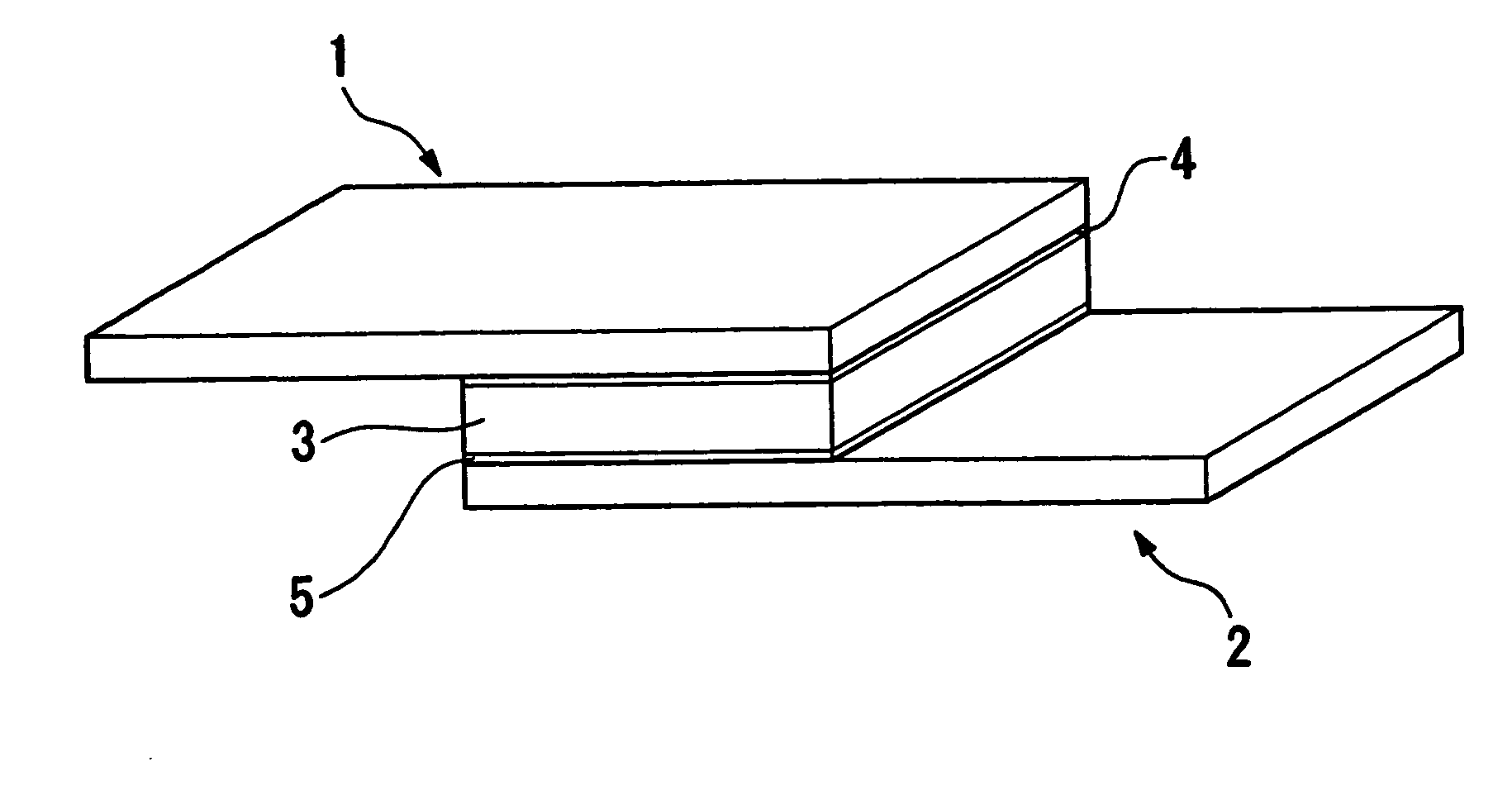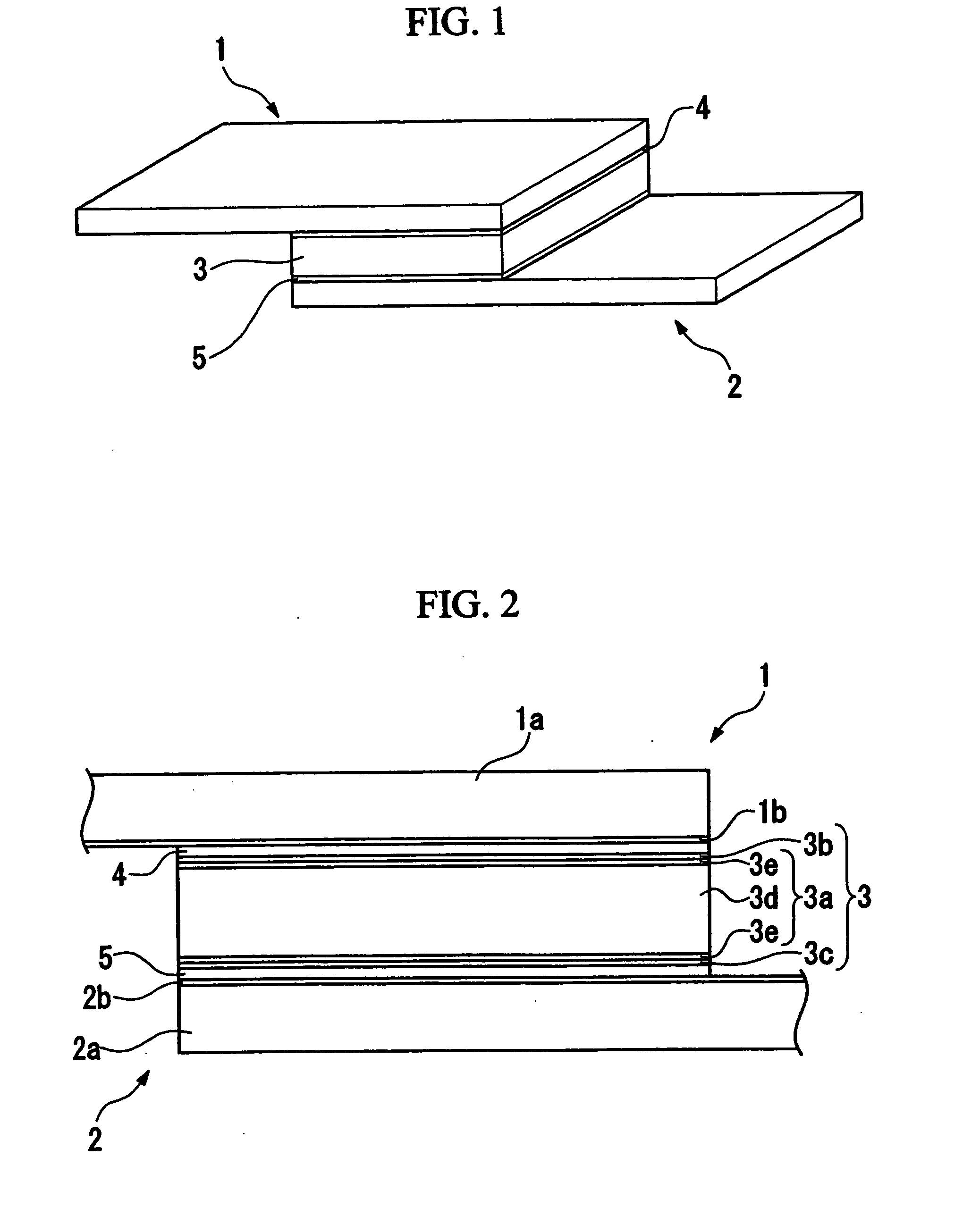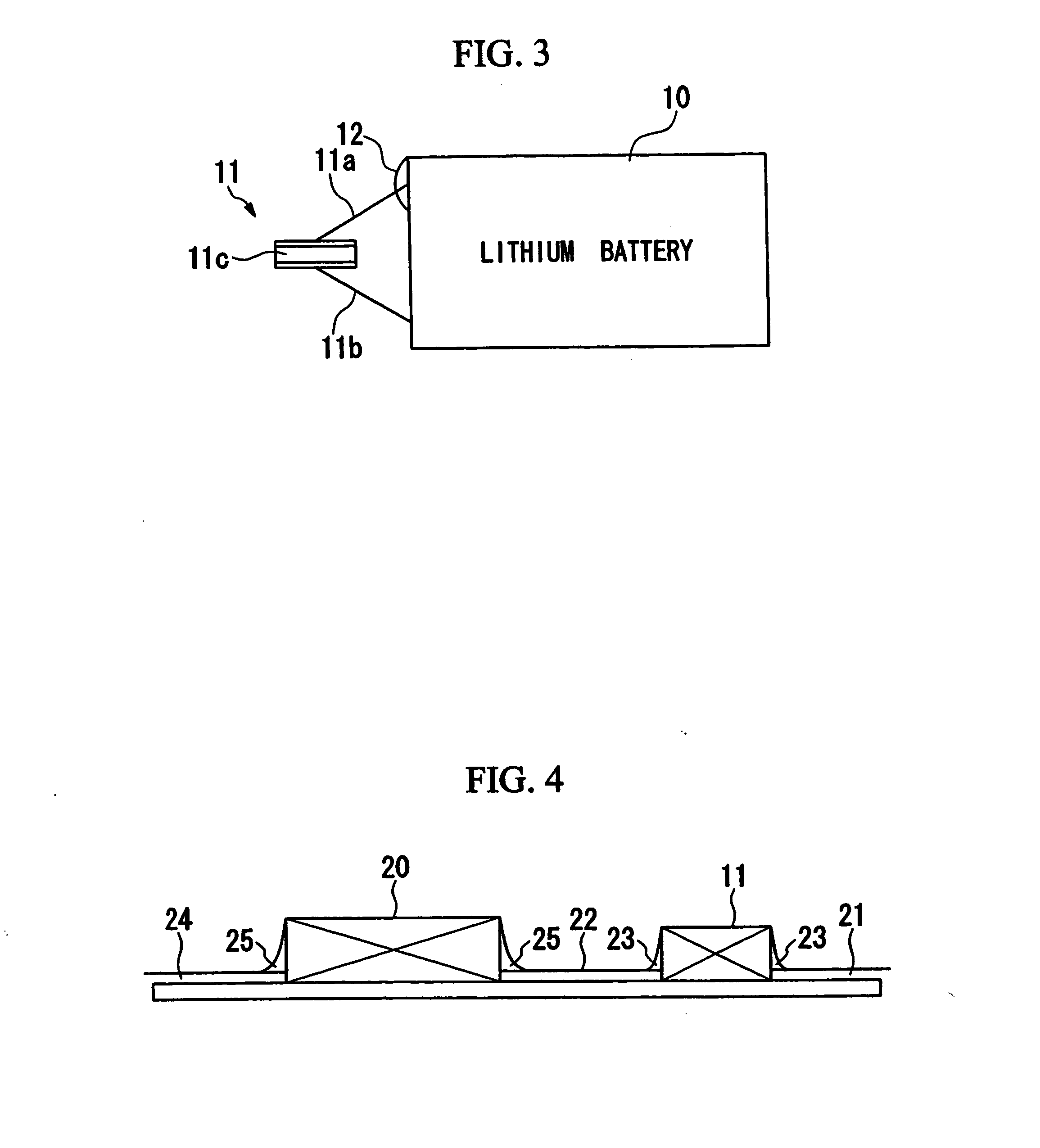Ptc thermistor and method for protecting circuit
a thermistor and circuit technology, applied in the direction of positive temperature coefficient thermistors, non-metal conductors, conductors, etc., can solve the problems of reducing conductivity, deterioration of adhesive bonding between the conductive member and the electrode, and difficulty in current flow, so as to achieve the effect of increasing the electrical resistan
- Summary
- Abstract
- Description
- Claims
- Application Information
AI Technical Summary
Benefits of technology
Problems solved by technology
Method used
Image
Examples
first embodiment
[0020] this invention, shown in FIGS. 1 and 2, is explained.
[0021]FIG. 1 and FIG. 2 show a polymeric PTC thermistor as an overcurrent protection device. This polymeric PTC thermistor comprises two electrodes 1, 2, and a conductive member 3 sandwiched between these two electrodes 1, 2. The electrodes 1, 2 and the conductive member 3 are bonded by adhesive 4, 5 having conductivity so that the two are not directly in contact with each other.
[0022] The electrode I is provided on one side surface of the conductive member 3 and the electrode 2 is provided on the other side surface of the conductive member 3. From a plane view, the electrode 1 is a rectangular sheet-form with uniform thickness and has a dual-layer structure of a nickel sheet la covered with a gold thin-film 1b. The electrode 2 also has the same shape as the electrode 1 and has a dual-layer structure of a nickel sheet 2a covered with a gold thin-film 2b.
[0023] From a plane view, the conductive member 3 is a square sheet-f...
second embodiment
[0034] Next, this invention, shown in FIG. 3, is explained.
[0035]FIG. 3 shows a protection circuit for lithium battery. This protection circuit is provided with a lithium battery (component) 10 and a PTC thermistor 11. For the PTC thermistor 11, one having a conventional construction was adopted rather than the construction explained in the above first embodiment. One lead of the PTC thermistor 11 is connected to the wiring 11 a linked to the positive electrode of the lithium battery 10, and the wiring 11 a is bonded, in such a way that current will flow, to the positive electrode of the lithium battery 10 by an adhesive 12 similar to the adhesive explained in the above fist embodiment Also, the other lead of the PTC thermistor 11 is connected to the wiring 11b linked to the negative electrode of the lithium battery 10, and the wiring 11b is bonded, in such a way that current will flow, to the negative electrode of the lithium battery 10 by a bonding means such as welding or solderi...
third embodiment
[0038] Next, this invention, shown in FIG. 4, is explained. Structural elements already in explained in the embodiments above have been given the same legends and explanations have been omitted.
[0039]FIG. 4 shows a circuit constructed on a printed substrate. This circuit is provided with a capacitor (component) 20, and a PTC thermistor 11 with two electrodes, one of which is connected to an electrode of the capacitor 20. One end of the wiring 21 is soldered to one electrode of the PTC thermistor 11, and one end of the wiring 22 is soldered to the other electrode (the legend 23 is solder). The other end of the wiring 21 in connected to an unillustrated input side of the circuit. The other end of the wiring 22 is connected, in such a way that current flows, to an electrode on the capacitor 20 with an adhesive 25 similar to the adhesive explained in the above first and second embodiments. One end of the wiring 24 of bonded with an adhesive 25, in such a way that current will flow, to t...
PUM
 Login to View More
Login to View More Abstract
Description
Claims
Application Information
 Login to View More
Login to View More - R&D
- Intellectual Property
- Life Sciences
- Materials
- Tech Scout
- Unparalleled Data Quality
- Higher Quality Content
- 60% Fewer Hallucinations
Browse by: Latest US Patents, China's latest patents, Technical Efficacy Thesaurus, Application Domain, Technology Topic, Popular Technical Reports.
© 2025 PatSnap. All rights reserved.Legal|Privacy policy|Modern Slavery Act Transparency Statement|Sitemap|About US| Contact US: help@patsnap.com



